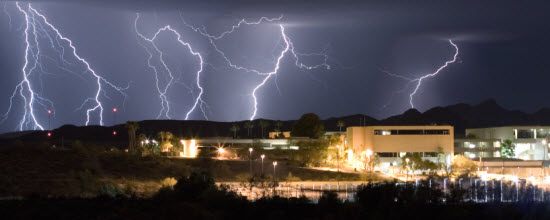Quick Take: Sometimes I highlight articles not because of what is said, but rather who is saying it. The latter is my motivation for pointing you to an article called “To Prevent Long Power Outages, Communities Look to Microgrids” from Governing.com.
I don’t know if you’ll learn anything new about microgrids from this article, other than details on some interesting projects. But the point is that a leading public sector magazine is now talking about microgrids as “a wicked hot topic.” And telling the stories of cities and campuses that have decided they never want to be without power again — and that a microgrid is the best way to guarantee power even during natural disasters.
That means that other cities and colleges in those regions will be clamoring for their own microgrids. And, soon after that, the cities and colleges and office parks from neighboring regions. I hope every utility is getting its microgrid implementation program ready for prime time.– Jesse Berst
A giant snowstorm knocked out power to Connecticut’s Wesleyan University three years ago. University officials hope it will never happen again thanks to a recently installed microgrid. Wesleyan can now generate its own power during an outage. It can also serve as a disaster coordination center for the region.
The microgrid concept is gaining popularity especially in Connecticut, Massachusetts, Maryland, New Jersey and New York, all of which have microgrid initiatives. With severe weather becoming more common, these states are turning to microgrids to minimize the impact.
- Connecticut’s 2012 law authorizes $18 million for nine community microgrid projects. And the state recently announced a second round of grants worth an additional $15 million.
- Massachusetts set aside $40 million to help improve grid resilience, and that money can be used for microgrids.
- A Maryland task force has recommended both utility-owned microgrids and private microgrids.
- The New Jersey transit agency developed a microgrid using railroad rights-of-way. The state has also directed federal disaster money toward microgrids.
- New York has a program that awards $40 million in prize money for 10 microgrids, plus another 20 million to help fund microgrids in Nassau and Suffolk counties.
Jesse Berst is the founder and Chief Analyst of SGN and Chairman of the Smart Cities Council, an industry coalition.

